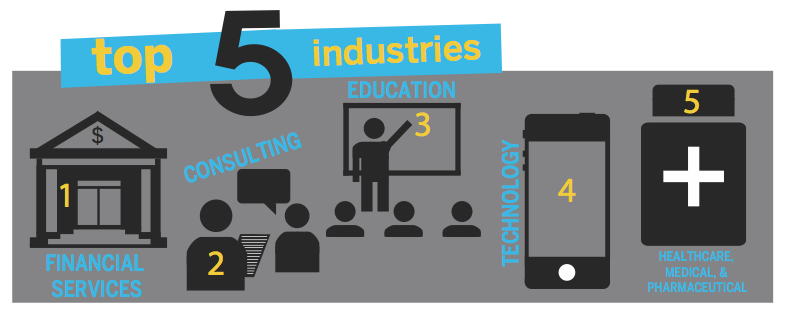
Since 2013, the Office of Career Strategy has released the First Destination Survey, through which graduating students report their plans for after graduation, including employment and graduate studies. Though the survey itself will not close until November — six months after graduation — here are the highlights from preliminary results as provided by OCS. The current response rate stands at 93.1 percent, though this figure, as well as others, will likely see some fluctuations until final survey results are compiled in November.

The class of 2015 saw an increase in students pursuing graduate school directly after graduation — approximately 21 percent compared to 17 percent for the class of 2014. Among graduate degrees pursued, approximately 13 percent will be law degrees, compared to 9.1 percent for the class of 2014, and 28 percent of degrees pursued will be medical degrees, compared to 24 percent in the class of 2014.
As is consistent with years past, students pursuing positions in the public sector, including nonprofits, government and nongovernmental organizations, remained strong at 30 percent.
Robyn Acampora, OCS’s director of strategic initiatives and public service careers, said the figure should not come as a surprise considering how involved students are in on-campus community service. Acampora highlighted alumni connections as a major motivator for how students pursue careers in public service.

“When students can hear from alumni who have created careers in public service, it not only inspires them to do great work but also shows them that it is possible to make a living in these sectors,” Acampora said, adding that she hosts weekly public service walk-in advising hours for interested students.
Akinyi Ochieng ’15 said that growing up in the Washington, D.C. area, she was surrounded by family and friends who were engaged in the nonprofit and public service worlds. Ochieng said that exposure, coupled with her interest in public and private approaches to international development, peaked her interest in a position in public service. Ochieng currently works at the Global Shea Alliance, a nonprofit association working to drive a sustainable shea industry to improve the lives of rural African women and their communities, in Accra, Ghana.
“Yale certainly places a moral imperative and a sense of urgency in giving back to the world,” Ochieng said.
But, Ochieng added that she did not have help applying to her current fellowship and job from OCS, though she did for applying to graduate school from which she deferred.
The class of 2015 also saw an increase in students pursuing careers in the healthcare industry, which moved into the top five industries — alongside financial services, consulting, education and technology — chosen by this class. The other four categories remained consistent from the previous year.

Kristin McJunkins, OCS’s director of health professions advisory programs, said the majority of Yale graduates entering the healthcare industry do tend to apply to allopathic, or MD, medical programs, though OCS does provide resources for those interested in osteopathic and dental-medical schools.
Andrew Briggs ’15, an analyst for the healthcare consulting firm Health Advances, said he used OCS to connect with employers who specifically recruit at Yale but that he did not specifically seek out any OCS administrators for advice on entering the healthcare industry or in choosing a particular employer. Briggs said it was possible that his graduating class entered the healthcare industry in higher numbers because of the changing nature of the field itself.
“Everything about healthcare — costs, treatment rates, the number of healthcare professionals — is growing, so there are always new opportunities unique to healthcare,” he said.
Briggs added that he thinks some opportunities within the healthcare field, such as clinical research, are underserved by OCS. Briggs said OCS resources may tend to go where the money is, namely industries like consulting and finance.
Though the data will likely continue to fluctuate until the final survey results are compiled in November, OCS Director Jeanine Dames said the survey should help dispel the myth that most post-graduate jobs are secured in the fall of senior year. Similar to the past two years, approximately 60 percent of those working in the class of 2015 secured their post-graduate position during their final spring term or later.








